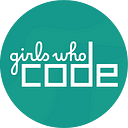Girls Who Code is expanding to Canada
Girls Who Code partners with Canada and Morgan Stanely to help close the gender gap in tech in Canada. This story first appeared in the Toronto Star.
By: Reshma Saujani
For years, and even more so recently in the wake of movements like #MeToo, the tech community has committed to welcoming more women and closing its gender gap. But how can the gap close if women aren’t pursuing education and careers in STEM at rates equal to men?
Right now, Canadian women make up only 23 percent of the STEM workforce, despite making up nearly half of the overall workforce. They make up less than a quarter of graduates with STEM degrees, but more than half of graduates overall. According to research by McKinsey, the gender gap in tech in Canada could take as long as 140 years to close.
In Canada, like in the U.S, it is not just access but culture and long-standing stereotypes that prevent girls from pursuing computer science. In both nations, ideas about who can and should be coding often stop girls from even expressing interest in the field.
Too often, they grow up hearing about famous technologists and scientists like Bill Gates, Alexander Graham Bell, Mark Zuckerberg — white men with whom girls, especially those of colour, don’t identify.
It’s rare that we have the opportunity to solve a problem within a single generation — but, though it may be difficult, closing the generation gap in tech is one of those rare challenges. From Vancouver to Montreal to Toronto — the opportunity and the will for real change exists and it is with support from partners like Morgan Stanley that we are able to have an impact.
Last year, Toronto had a faster growing technology sector than Silicon Valley, with 28,900 tech jobs created, for a total of more than 241,000 workers — up 52 percent over the past five years. And the Canadian government is devoted to growing the nation’s tech sector — allocating over $1 billion to create jobs and increase skill sets in the industry in 2017.
We can’t hope to be competitive on the global stage if we leave half our population behind. It’s on all of us to prepare girls for the fastest-growing and highest-paying jobs not only because it makes economic sense, but because by preparing them for these jobs we’re also preparing them to develop solutions to our greatest social challenges.
Teach a girl to code, and she will change the world. I believe that because I’ve seen it. Partners like Morgan Stanley have hosted Girls Who Code Summer Immersion Programs where girls have created apps to promote body-positivity, raise awareness for global crises, and inform voters about upcoming elections. Other alumni of Girls Who Code have gone on to create apps to address climate change, support local refugees, prevent gun violence, and more.
And those are just a handful of apps from a handful of girls. Over the course of six years, Girls Who Code has reached 90,000 girls in all 50 U.S. states. We’ve refined gender-specific computer science programming.
We’ve focused on targeting those in middle school because we know, from our research, that 70 percent of the growth in the computing pipeline comes from changing the path of the youngest girls. And we’ve developed curricula featuring women in computer science — women like Ada Lovelace and Katherine Johnson and Roberta Bondar — because we know that girls cannot be what they cannot see.
